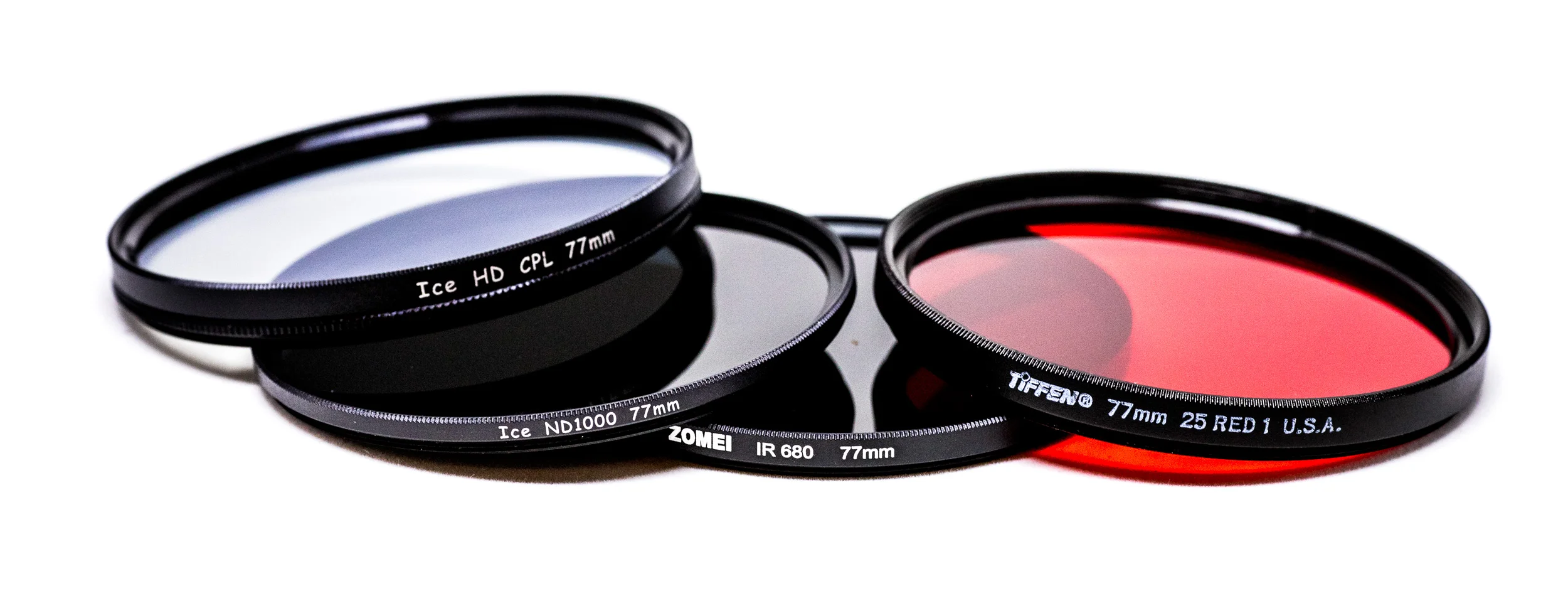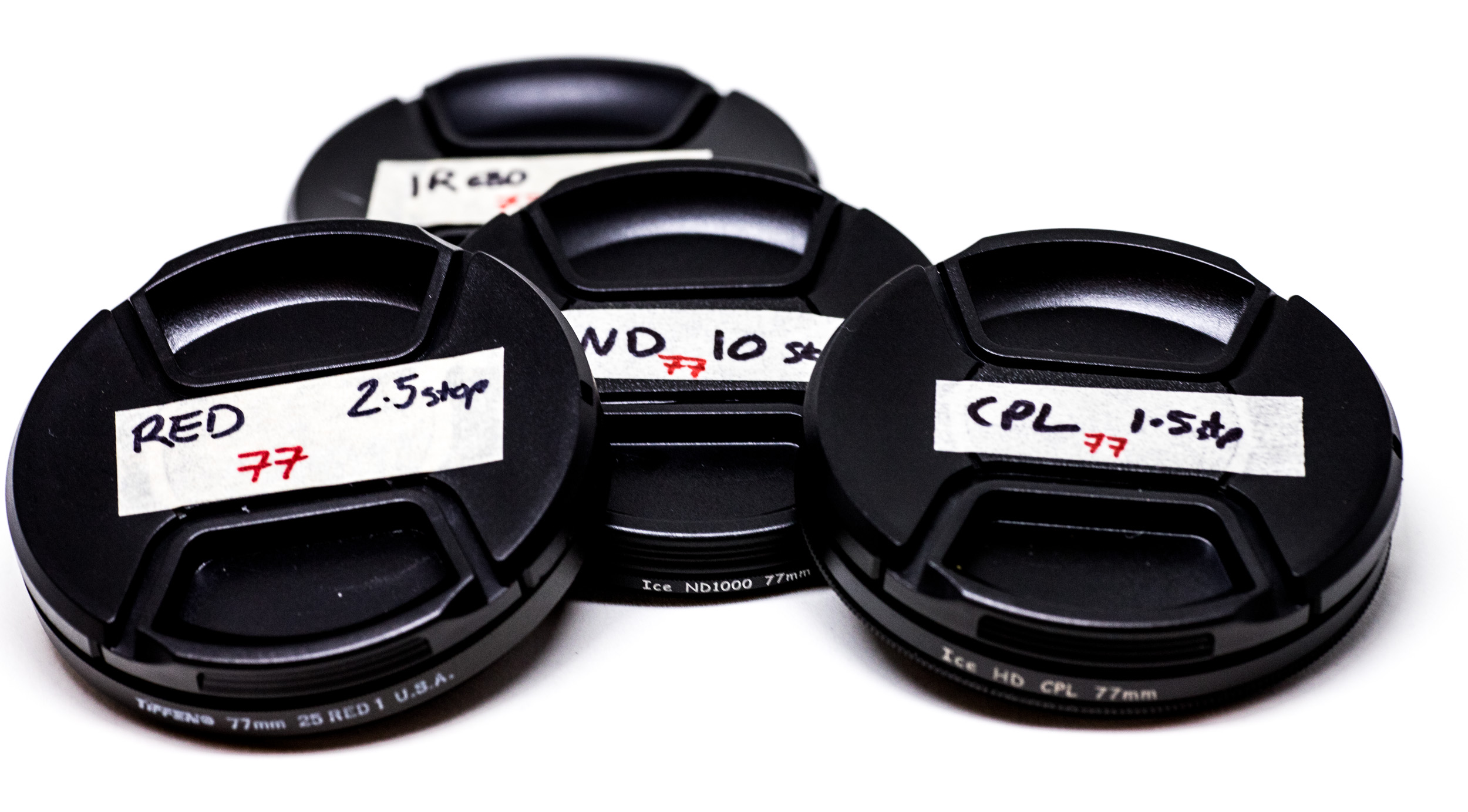Assembling a photography filter set
Filters are an added layer of complication to the already infinite variables in making an exposure, but they can be used for powerful creative effects.
Are filters dead?
Though you'll read in places that filters are dead in these times of digital photography, the advice usually assumes you are willing to merge 50 photographs to replace a single shot taken with a filter (as in the case of ND filters), or generally swap the use of filters for hours of post-processing work. I don't want to waste hard drive space or pollute my image catalog with thousands of redundant images.
With black and white film photography, filters are more of a necessity. ND filters allow wider apertures to be used in sunny conditions because many film cameras have maximum shutter speeds in the region of 1/500th - 3 or 4 stops less latitude than a modern camera. Red filters are especially handy to add drama to landscapes, and Ilford still make infra-red sensitive film which, in combination with an IR filter, can make some stunning IR images that can't be matched by an un-modified digital.
Lastly, I use UV filters on most lenses to prevent damage to the front elements. That means if I wipe the lens with the bottom of my t-shirt (we all do it), I'm not running the risk of turning my vintage lens into a vintage paper weight. And who even uses paper weights?
What filters to carry?
- Circular polarizer. Helps reduce reflections from shiny surfaces (like reading glasses or windows) and can even be used as a 1.5-stop ND so you don't have to carry both.
- 10 stop ND filter. This is great for getting rid of moving people from a landscape, or really smooth out flowing water.
- Red filter. Darkens skies so we can pretend to be Ansel Adams taking a picture of Half-Dome.
- IR filter (680um). IR photography with Ilford SFX 200 film.
Step-up rings and adapters
When you have a collection of lenses it doesn't make financial sense to have a set of filters for each thread size or type. I've found the most efficient set up is to use filters that are the size of your largest lens, and use step-up rings for smaller lenses.
Talking of step-up rings - I don't use a series of rings like you usually see for sale (e.g. 58-62mm, 62-67mm, 67-72mm, 72-77mm etc.), instead I use a set in which each size goes directly to 77mm (e.g. 58-77mm, 62-77mm, 67-77mm etc.). I couldn't find a 43-77mm step-up ring for my PEN FT lenses, so I use a 43-58mm as an intermediate.
The same mentality applies to adapters - I use a B50 to 77mm adapter to get filters onto my Hasselblad 500 lenses. This is handy for specialty filters like infra-red, but I also use regular B50 filters at times when the filters are likely to stay on the lens for more than one shot (like UV or polarizing filters).
Filter case accessories
Along with the 77mm filters, I carry a lens cloth and some filter wrenches because filters and their adapters seem always to stick together at an inconvenient time. To prevent unscrewing issues, I never fully tighten the filters.
Lastly, and perhaps most importantly, I write the filter factor of all the filters on their lens caps using masking tape. The 10-stop ND might be self explanatory, but I always forget how many stops my polarizer or red filter soaks up.



